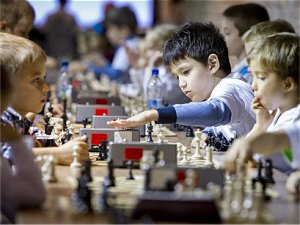


The Festival took place in the Budapest castle on the shore of the Danube. A splendid and prestigious location that underlines how representative chess can be.

Judit Polgar in front of the entrance to the festival area.
The presence of the Minister of National Development Miklos Sesztak underlined this even further.

Judit, Minister Miklos Sesztak, and Sofia Polgar in a visibly optimistic mood
For the participating kids it was a true chess feast and for their accompanying parents an all-day family entertainment.

The Chess Palace hall at the Global Chess Festival
The Chess Palace Educational program just received the BELMA (Best European Learning Material Award) special prize for innovation, awarded at the Frankfurt Book Fair.

The educational carpet of the Chess Palace

Sofia Polgar teaches the beginners

Sofia Polgar at the chess stairs

Mother and son think that chess and life are wonderful in... a 1000 ways

In chess and in life one must keep the balance...

...between expansiveness...

...and relaxation.

Daniel Yarur (left) from Chile explains his ideas about chess to the public.
The festival attracted representatives from various countries,
e.g. Chile, New Zealand or the USA.

Judit invites children to take a bite of chess chocolate at the closure of the festival

The 3D chess palace where kids could cash in chess money for valuable items.
At the desk are Judit's children Oliver and Hanna, who were helping the festival organization.

Throughout the day one could watch chess performances...

...on the stage of the Chess Palace.

Playing for the Chess Palace cup

Chess is suitable for all ages and... heights

Signaling a back rank mate?!

To be a good chess player you need to know how to fish in muddy waters... and not only.

A well-known face of chess
 Picture 18
Picture 18
No, Judit did not change her mind in regard to retire from tournament chess.
But for a photo she went back the board. Her "opponent" is Vujity Tvrtko,
one of the best known anchormen in Hungarian TV.

Same issue. Handling a marzipan chess set is delightful, but cannot be considered to be serious chess.
But Judit was the driving force behind the festival and practically everywhere:

...introducing the activities...

...giving a simul...

...signing autographs...

...giving interviews...

...or just kibitzing!
As an art, chess can go hand in hand with:

Dancing...

...singing...

... or painting!
To many advanced and experienced players, the central attraction might have been the Highlander Cup, a concept explained in the first part of the report.
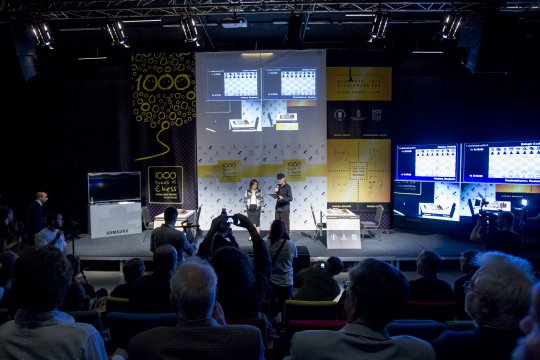
Judit Polgar, the soul of the festival, welcomes the players and spectators in the playing hall.
To nostalgic people like yours truly, the most remarkable match was the semifinal Karpov-Gledura, ending with the surprising but entirely deserved win of the young Hungarian. Looked at from the spectator's area, Karpov's play was painfully slow in both games, even though the former World champion showed his renown class in at least some moments.
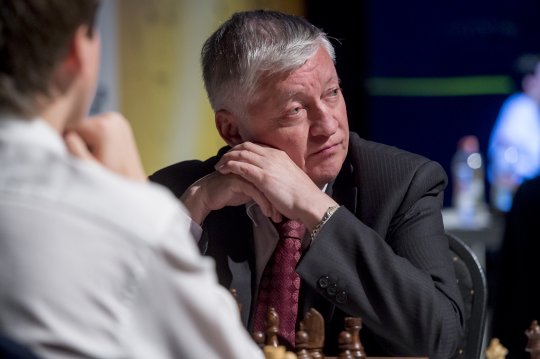
Anatoly Karpov, searching for his former class
In the second game Karpov played a positional English variation, but he failed to treat his opponent with the usual Karpovian squeeze.

Benjamin Gledura: "Is this really going to happen to me?"
The other semifinal Kasimdzhanov-Balogh also had a promising start for the Hungarian player who drew with black without too much trouble.
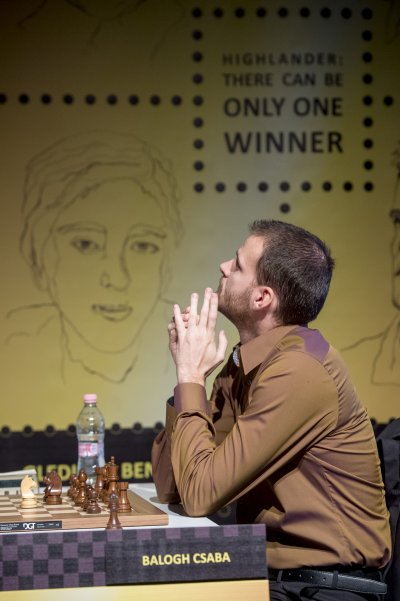
Csaba Balogh: "Isn't this supposed to be just equal?"
But in the second game he got a slightly passive position after the opening and went down quickly after prematurely breaking the centre.
In the final Gledura once again justified Judit's trust to invite him to play in such strong company. Kasimdzhanov later admitted that in the first two games (both ended in draws) he not only failed to get an advantage, but also felt under constant pressure. But in the first play-off game the former FIDE-World Champion won practically out of the opening.
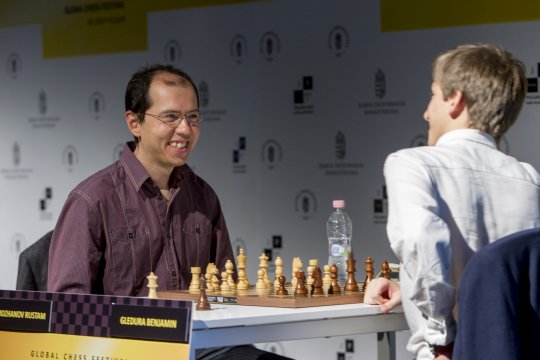
Chess can be fun even with 20K euro at stake.
The second play-off game featured a much less linear story. Up to a certain point Benjamin played a fine positional game, but then "blundered a square" and things started going Rustam's way.
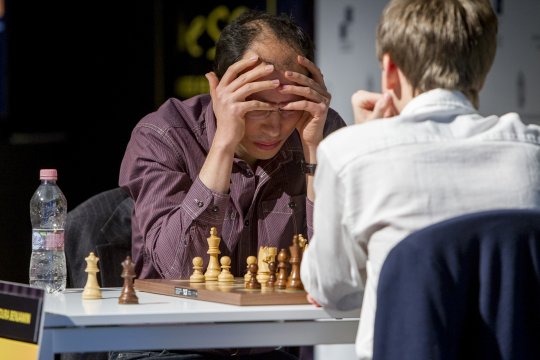
When the game advances deep concentration is needed.
All Games
All images provided by the Judit Polgar foundation